运筹学课程课件
- 格式:doc
- 大小:145.50 KB
- 文档页数:7
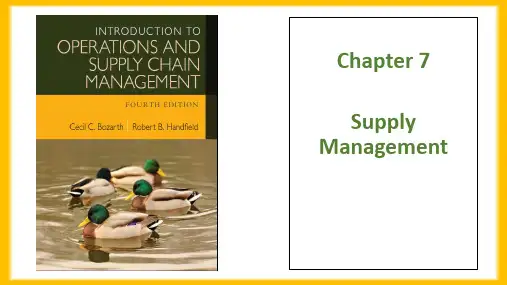

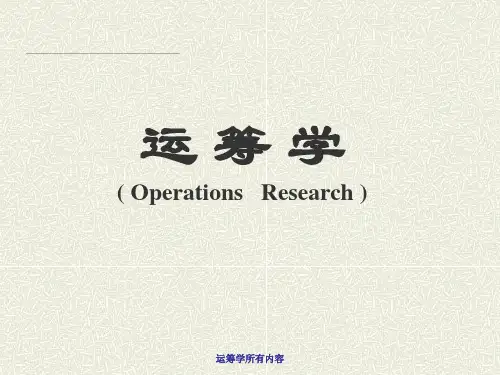


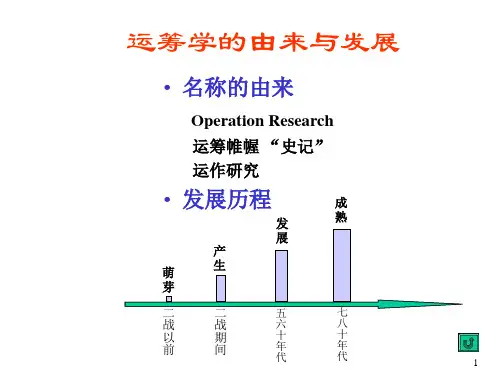



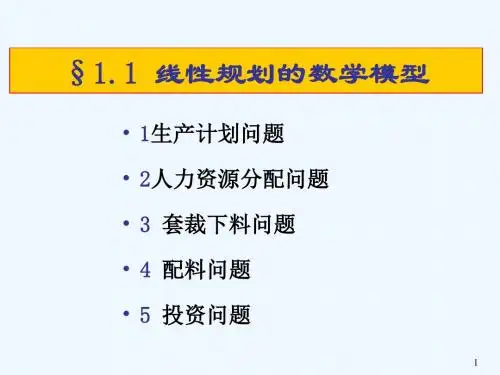
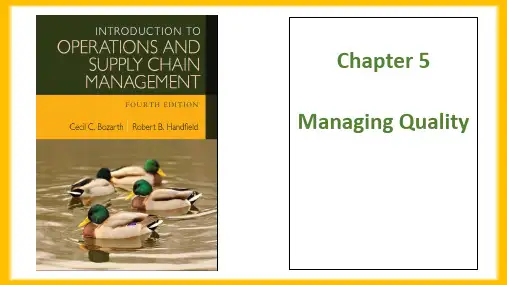
中原工Zhongyuan University of TechnologyCourse SyllabusDecember 5Note: Each student should print out this course syllabus and bring it to each class session. COURSE TITLE: Principles of Marketing: A Global PerspectiveINSTRUCTOR: William Teng, Ph.D., CFACONTACT: wyteng@FACULTY BIO: Dr. William Teng received his Ph.D. in Economics and Finance from the University of Memphis in Tennessee. Dr. Teng also holds the designations of Chartered Financial Analyst (CFA). Dr. Teng has more than fifteen years of teaching experience at both the undergraduate and the graduate levels. He has published research papers in the International Journal of Service Science, Information Technology Journal, and Economics System.TEXTBOOK:Keegan, Warren, Global Marketing, 8th edition, Prentice-Hall, 4LEARNING OUTCOMES:Upon successful course completion, students should be able to:1. Identify the principles of marketing and explain the impact these principles have on the global economic, social/cultural, legal/political, and regulatory environment.2. Identify regional economic markets and explain how to qualify and quantify potential opportunities using research, segmentation, and targeting techniques.3. Explain how marketing ‘mix’ decisions – product, price, physical distribution, promotion – impact a global marketing strategy.4. Explain the strengths and weaknesses of a company’s global marketing plan.COURSE OUTLINE:The outline included below is subject to change. Class assignments and complete listing of readings and assignment questions for each class will be discussed in class.DAY 1: CHAPTERS 1 AND 2Chapter 1: Introduction to Global MarketingGlobal marketing’s importance today is shaped by the interplay of several driving and restraining forces. The former includes market needs and wants, technology, transportation and communication improvements, product costs, quality, world economic trends, and recognition of opportunities to develop leverage by operating globally. Restraining forces include market differences, management myopia, organizational culture, and national controls. After you complete this section, you should be able to answer the following questions:1.What are the basic goals of marketing? Are these goals relevant to globalmarketing?2.What is meant by “global localization?” Is Coca-Cola a global product? Explain.3.Describe some of the global marketing strategies available to companies. Giveexamples of companies that use the different strategies.Chapter 2: The Global Economic EnvironmentThe economic environment is a major determinant of global market potential and opportunity. In today’s global economy, capital movements are the driving force, and production is uncoupled from employment. Based on patterns of resource allocation and ownership, the world's economies can be categorized as market capitalism, centrally-planned capitalism, centrally-planned socialism, and market socialism. The final years of the 20th century were marked by transitions toward market capitalism in many countries that had been centrally controlled. After you complete this section, you should be able to answer the following questions:1.Why are Brazil, Russia, India, and China (BRIC) highlighted in this chapter?Identify the current stage of economic development for each BRIC nation.2. A manufacturer of satellite dishes is assessing the world market potential for hisproducts. He asks you if he should consider developing countries as potentialmarkets. How would you advise him?3. A friend is distressed to learn that America's merchandise trade deficit hit a record$780 billion in 5. You want to cheer your friend up by demonstrating that thetrade picture is not as bleak as it sounds. What do you say?Homework Assignment:Case Study: McDonald’s Expands Globally While Adjusting Its Local Recipe.On Tuesday, before the class starts, each team is to submit a printed PowerPoint slide set containing the team’s response to the case questions listed below. Meanwhile, several teams will be randomly selected to give oral reports to the class. Therefore, each team ought to prepare to give an oral presentation while working on the PowerPoint slide set.Case Overview:Today, McDonald’s golden arches are one of the most recognized symbols in the world, just behind the Olympic rings. While growth within the U.S. has slowed, the picture outside the U.S. has appeared brighter until recently. However, globally, taste profiles and consumer desires are changing. McDonald’s has responded to these changes by altering their basic products (when necessary) to fit the requirements of the local markets. While not always successful, it has proven to be a winning strategy. Completely answer the following questions in your PowerPoint slide set.1.Identify the key elements in McDonald’s globa l marketing strategy (GMS). Inparticular, how does McDonald’s approach the issue of standardization?2.Do you think government officials in developing countries such as Russia, China,and India welcome McDonald’s? Do consumers in these countries welcomeMcD onald’s? Why or why not?3.Is it realistic to expect that McDonald’s can expand globally without occasionallymaking mistakes or generating controversy? Why do anti-globalization protesters around the world frequently target McDonald’s?DAY 2: CHAPTERS 7 AND 10Chapter 7: Segmentation, Targeting, and PositioningAfter marketers have identified segments, the next step is targeting: The identified groups are evaluated and compared, and one or more segments with the greatest potential is selected from them. The groups are evaluated on the basis of several factors, including segment size and growth potential, competition, and compatibility and feasibility. Positioning a product or brand to differentiate it in the minds of target customers can be accomplished in various ways: positioning by attribute or benefit, positioning byquality/price, positioning by use or user, and positioning by competition. After you complete this section, you should be able to answer the following questions:1.American Isuzu Motors recently introduced the AXIOM SUV in the United Stateswith a base sticker price of $25,985. The base price for a Honda CRV is $18,750;prices for Toyota's RAV4 start at $16,365. Assess Isuzu's decision to target theU.S. market for sport utility vehicles.2.What is positioning? Identify the different positioning strategies presented in thechapter and give examples of companies or products that illustrate each.3.What is a high-touch product? Explain the difference between high-tech productpositioning and high-touch product positioning. Can some products be positioned using both strategies? Explain.Chapter 10: Product and Branding DecisionsA brand is a complex bundle of images and experiences in the mind of the customer. In most countries, local brands compete with international brands and global brands. A global product meets the wants and needs of a global market. A global brand has the same name and a similar image and positioning in most parts of the world. Many global companies leverage favorable brand images and high brand equity by employing combination (tiered) branding, co-branding, and brand extension strategies. Companies can create strong brands in all markets through global brand leadership. After you complete this section, you should be able to answer the following questions:1.What are some of the elements that make up a brand? Are these elements tangibleor intangible?2.Identify several global brands. What are some of the reasons for the globalsuccess of the brands you chose?pare and contrast the three categories of innovation discussed in the chapter.Which type of innovation do flat panel widescreen HDTVs represent? Homework Assignment:Case Study: Carmakers Target Gen YOn Wednesday, before the class starts, each team is to submit a printed PowerPoint slide set containing the team’s response to the case questions listed below. Meanwhile, several teams will be randomly selected to give oral reports to the class. Therefore, each team ought to prepare to give an oral presentation while working on the PowerPoint slide set.Case Overview: Due to the projected growth of Generation Y individuals coming into the work force, world automakers are switching their attention to Gen Y. Gen Y has a high market potential for Japanese cars that are associated by youth with “coolness.” Toyota, Honda and Hyundai make use of multiple marketing strategies to provide themselves with new customers. One of those strategies, creating car models especially for young people, such as Toyota’s Scion and Honda’s Elements, proves to be effective.1.Why are Japanese automakers targeting Gen Y?2.Do you think Honda and Toyota are using the right strategy by creating newvehicles such as the Element and the Scion (See the photos above)?3.Do you agree with To yota’s decision to limit the number of Scion vehiclesavailable for sale?DAY 3: CHAPTER 11 AND 16Chapter 11: Pricing DecisionPricing decisions are a critical element of the marketing mix that must reflect costs, competitive factors, and customer perceptions regarding value of the product. In a true global market, the law of one price would prevail. Pricing strategies include market skimming, market penetration, and market holding. Novice exporters frequently use cost-plus pricing. International terms of a sale such as ex-works, F.A.S., F.O.B., and C.I.F. are known as Incoterms and specify which party to a transaction is responsible for covering various costs. These and other costs lead to price escalation, the accumulation of costs that occurs when products are shipped from one country to another. Expectations regarding currency fluctuations, inflation, government controls, and the competitive situation must also be factored into pricing decisions. After you complete this section, you should be able to answer the following questions:1.Define the various types of pricing strategies and objectives available to globalmarketers.2.What is dumping? Why was dumping such an important issue during the UruguayRound of GATT negotiations?3.If you were responsible for marketing CAT scanners worldwide (average price,$1,,000) and your country of manufacture was experiencing a strong andappreciating currency against almost all other currencies, what options areavailable to you to maintain your competitive advantage in world markets? Chapter 16: Strategic Elements of Competitive AdvantageAccording to Porter's five forces model, industry competition is a function of the threat of new entrants, the threat of substitutes, the bargaining power of suppliers and buyers, and rivalry among existing competitors. Porter's generic strategies model can be used by managers to conceptualize possible sources of competitive advantage. A company can pursue broad market strategies of low cost and differentiation or the more targeted approaches of cost focus and focused differentiation.1.Identify the five driving forces to determine the business landscape of an industry.2.Explain how each of the five forces affects the average profitability in an industry.3.Identify the sources of competitive advantage of a firm.EVALUATION:The breakdown of course grade is as follows.1. Homework Assignments & Presentations (2) 80%2. Attendance and Class Participation 20%Total: 100%Grades: A = (90-100); B = (80-89); C = (70-79); D = (60-69); F = (0-59) ACADEMIC INTEGRITYStudents are expected maintain high standards of academic integrity in all work for this course and are expected to demonstrate their own mastery of the subject material on projects and case work. Students are expected to develop good working relationships with other members of the class. Dishonesty in any work may result in the grade of F forthe course. Plagiarism is a form of academic dishonesty that may result in the same penalty.ATTENDANCEThe course consists of three-day scheduled class meetings. Students are expected to attend all class sessions and to actively participate in all class discussions.。